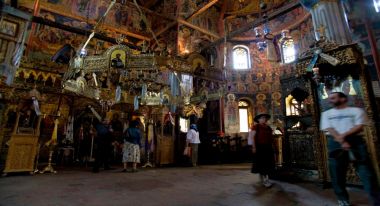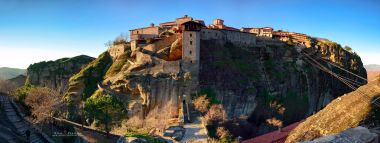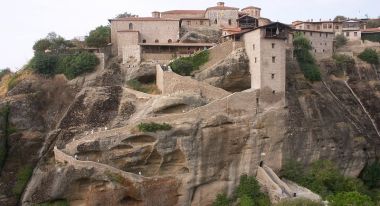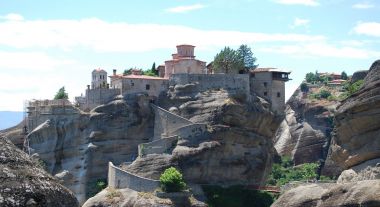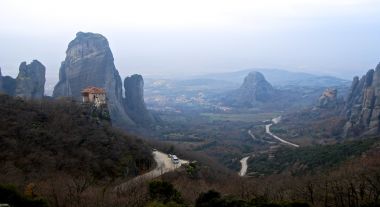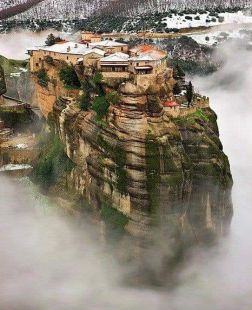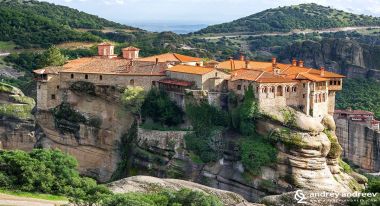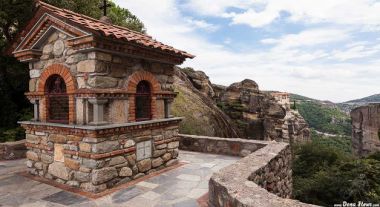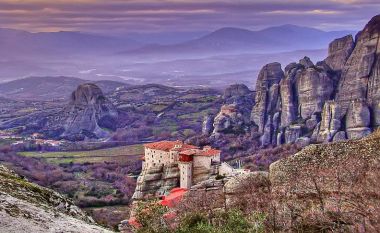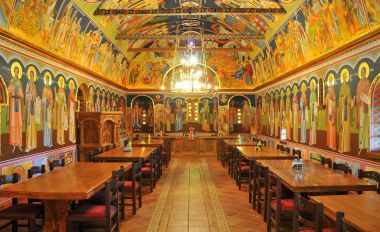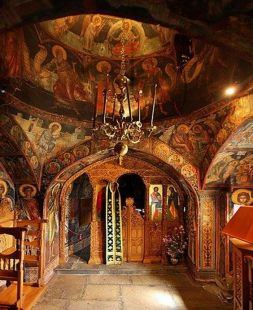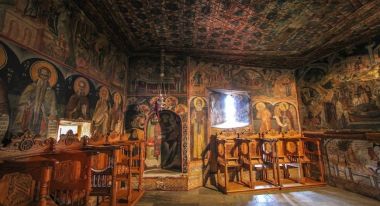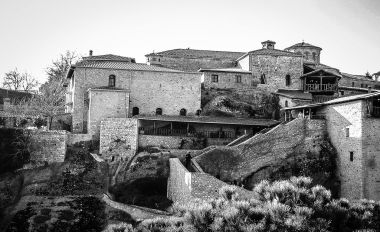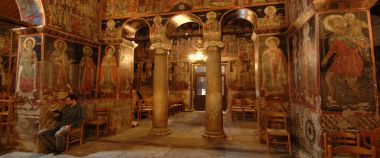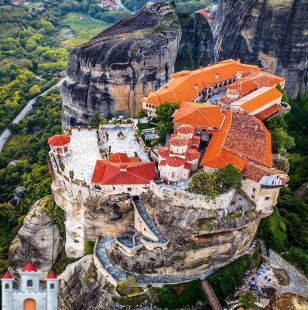Meteora is a complex of dark sandstone rocks that rise outside Kalambaka, near the first hills of Pindos and Hassia. The monasteries of Meteora, which are built on the tops of some of the rocks, are today the second most important monastic complex in Greece, after Mount Athos. Of the thirty that have existed historically, only six are in operation today, which, since 1988, are included in the list of UNESCO World Heritage Sites.
Meteora is located on the northwestern border of the Thessalian plain and near the southern tip of the Middle Greek Basin, a tectonic depression that extends from Albania to Thessaly.
The Meteora complex consists mainly (at a rate of up to 95%) of pebbled sandstone and cobblestone of the Oligocene and Neolithic, and the rest are mainly coarse sandstones. It also contains a very small percentage of siltstones, which where present form a thin layer a few centimeters thick.
The wild and inaccessible landscape was a suitable place for the Christian ascetics who settled in the area in a date that is not exactly known.
According to various opinions of Byzantine scholars, it is claimed that it started before the 11th century. Other historical information, however, mentions Barnabas as the first ascetic to settle, who in 950-970 founded the very old Hermitage of the Holy Spirit. This was followed by the foundation of the Transfiguration (1020) by a Cretan monk Andronikos and in 1160 the Sketi Stagon or Doupiani was founded. After 200 years the ascetic Barlaam founded the Monastery of the Three Hierarchs and All Saints and later unknown priests created the Monasteries of Agia Triados, Agios Stefanos, Ypapantis, Rousanos or Arsanos, Agios Georgios of Mandis , Our Lady of Mycenae, Saint Theodore, Saint Nicholas of Bandova, Saint Apostles, Saint Gregory, Saint Anthony, Pantocrator, Saint Moni, Prodromos, Monastery of the Most High, or Calligraphon, Modesto, Alyse , Apostolos Petros, Agios Dimitrios, Kallistratos, Taxiarchon and Ioannou Bounilas.
Meteora is located on the northwestern border of the Thessalian plain and near the southern tip of the Middle Greek Basin, a tectonic depression that extends from Albania to Thessaly.
The Meteora complex consists mainly (at a rate of up to 95%) of pebbled sandstone and cobblestone of the Oligocene and Neolithic, and the rest are mainly coarse sandstones. It also contains a very small percentage of siltstones, which where present form a thin layer a few centimeters thick.
The wild and inaccessible landscape was a suitable place for the Christian ascetics who settled in the area in a date that is not exactly known.
According to various opinions of Byzantine scholars, it is claimed that it started before the 11th century. Other historical information, however, mentions Barnabas as the first ascetic to settle, who in 950-970 founded the very old Hermitage of the Holy Spirit. This was followed by the foundation of the Transfiguration (1020) by a Cretan monk Andronikos and in 1160 the Sketi Stagon or Doupiani was founded. After 200 years the ascetic Barlaam founded the Monastery of the Three Hierarchs and All Saints and later unknown priests created the Monasteries of Agia Triados, Agios Stefanos, Ypapantis, Rousanos or Arsanos, Agios Georgios of Mandis , Our Lady of Mycenae, Saint Theodore, Saint Nicholas of Bandova, Saint Apostles, Saint Gregory, Saint Anthony, Pantocrator, Saint Moni, Prodromos, Monastery of the Most High, or Calligraphon, Modesto, Alyse , Apostolos Petros, Agios Dimitrios, Kallistratos, Taxiarchon and Ioannou Bounilas.



